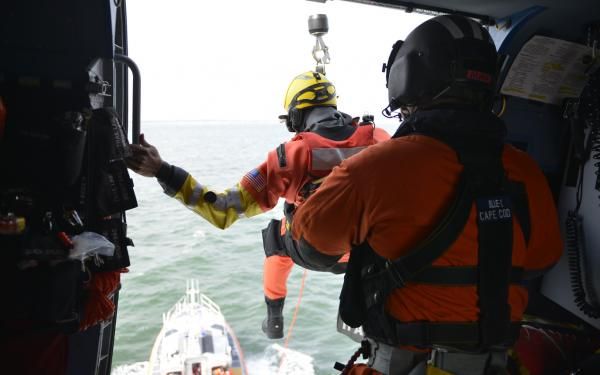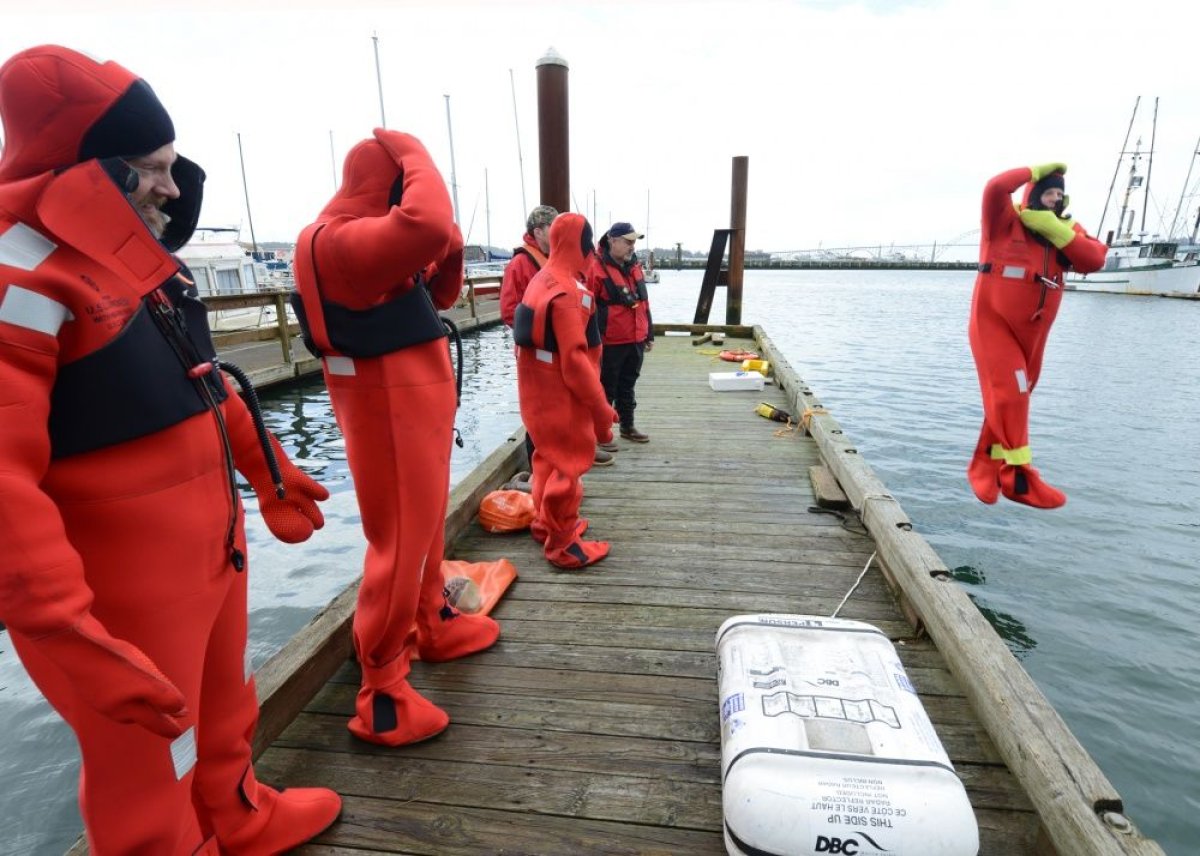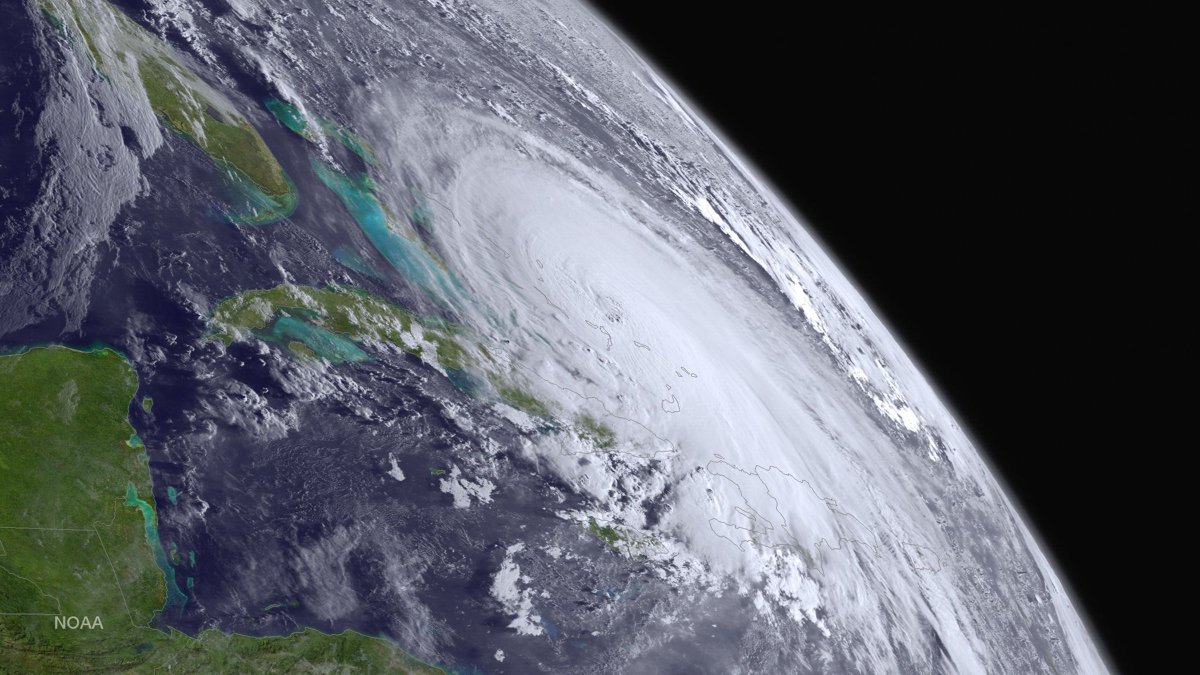
Former Secretary of the Treasury Alexander Hamilton formed the United States Coast Guard in 1790 and since then it's transformed from a floating enforcer, taxing imports, to an organization responsible for saving lives. Here are some incredible rescues from the last 228 years that exemplify its motto Semper Paratus -- "always ready."
The SS Pendleton and SS Fort Mercer, 1952
In the winter of 1952, two World War II-era tanker ships, the SS Pendleton and SS Fort Mercer, both split apart within hours of each other off the coast of Massachusetts during a nor'easter.
Faced with rough conditions and freezing water, the likelihood the men aboard the sinking ships would survive was slim. But thanks to Coast Guard Petty Officer Bernard Webber, Petty Officer 3rd Class Andrew Fitzgerald, Seaman Richard Livesay and Seaman Ervin Maske, 32 of the 33 crew members were rescued, according to Department of Defense Live (DoD Live).
"We were confident we were going to do it," Fitzgerald told The Denver Post. "We were on a 36-footer, but a pretty rugged one. We had Bernie (Webber) as our coxswain, one of the best in the Coast Guard. It was rough, with 70-mile-per-hour winds, and when I first got on the boat, it was so small I thought to myself, 'Where do I go to the bathroom?' But we got darn-near 40 people on that thing."

Large swells shattered the windshield of the 36-foot lifeboat and tore the compass from its mounts. Fortunately, their expert navigation, bravery, and tenacity enabled them to successfully reach the men and return to shore. Webber, Fitzgerald, Livesay, and Maske all received the Gold Lifesaving Medal, the Coast Guard's highest honor for heroism during a rescue operation.
"I joined the Coast Guard because I figured I was going to get drafted, and I didn't think I could take a rifle and shoot at other people," Fitzgerald told The Denver Post. "The other services train you to kill people, but the Coast Guard trains you to save them. I was thrilled to be on the boat that night."
As for the Fort Mercer, William R. Keily Jr. and his crew used a small surfboat to save two crew members and return safely to the CGC Yakutat, all while the small surfboat was taking on water. Keily also received the Gold Lifesaving Medal for his actions.
The Alaska Ranger, 2008
On Easter Sunday in 2008, the 189-foot fishing boat Alaska Ranger sank in the Bering Sea. At 2:52 a.m. local time, the Coast Guard received a mayday call from the ship, which had begun taking on water, according to Popular Mechanics. It quickly became clear that the ship was going to sink and 65-year-old Captain Peter Jacobsen issued an order for crew members to abandon ship, so his men pulled on their survival suits and jumped into the near-freezing water.
When Coast Guard rescuers arrived on the scene, there was a mile-long line of survivors floating in the some of the most treacherous seas on earth -- featured on the show The Deadliest Catch -- according to ABC News. Helicopter pilot Steve Bonn, co-pilot Brian McLaughlin, flight mechanic Robert Debolt and rescue swimmer O'Brien Hollow, responded to the mayday call in a Jayhawk helicopter.
"I did pick up a couple of survivors who were terrified, and rightly so. They were in the middle of the Bering Sea. The water was 35 degrees. They were freezing and they were alone," Hollow told ABC News.

When the helicopter was at capacity with survivors, McLaughlin made the tough choice to lower survivors down onto the Alaska Ranger's sister ship, the Alaska Warrior, that was 10 miles away, instead of flying farther away to land somewhere. Unfortunately, it was deemed too dangerous and McLaughlin decided to unload survivors onto a Coast Guard cutter called the Munro, which was 75 miles away, instead.
A second helicopter arrived on the scene and rescue swimmer Abram Helle worked to get crew members into the helicopter and keep others, who were still in the water, warm.
Forty-two of the 47 crew members were successfully hoisted from the freezing water by the various Coast Guard members. Four bodies were recovered from the water, including first mate David Silveira, chief engineer Daniel Cook, fish processor Byron Carrillo and Jacobsen, according to Popular Mechanics. Satoshi Konno, the vessel's Japanese fishmaster, was never found.
"He always said he would be the last one out if anything ever happened and would go down with the ship to save people," Jacobsen's daughter, Karen, told Fox News. "He died doing what he loved to do — and really, he was a hero."
She added that she particularly missed her father's voice and both she and her brother cried when they heard the mayday call. " Who wants to listen to their father right before he dies?"
McLaughlin told Popular Mechanics that the Alaska Ranger was "pretty huge" and "as big a case as you can imagine."
"The Alaska Ranger was something entirely different: 'You get out there, you get on scene and you get into a hover and you look to your left, you look to your right, and you see strobe lights wherever you look. And you think, oh my God, where do I begin? Then you just pick a spot as quickly as you can and start getting people out of the water," he explained.
Despite the unfortunate loss of five people, the men being able to survive as long as they did in the water and the rescuers being able to save as many as they could, makes the rescue a remarkable success.
The Minouche, 2015
At the height of Hurricane Joaquin, 12 crew members of the Minouche, a 212-foot cargo ship, were forced to abandon ship in the ocean between Haiti and Cuba. Adrift on a lifeboat, battling 15-foot seas and 50-knot winds during the Category 4 hurricane, their only hope for survival was the United States Coast Guard.
Fortunately, the Coast Guard not only answered their call for help but rose to the occasion to accomplish an extraordinary feat. Lt. David McCarthy, the MH-60 Jayhawk aircraft commander, Lt. John "Rick" Post, the co-pilot, Petty Officer 1st Class Ben Cournia, aviation survival technician, and Petty Officer 2nd Class Joshua Andrews, aviation maintenance technician, made their way to the scene in a helicopter and despite their night-vision goggles and radar being rendered practically useless, devised a plan to save the stranded crew.
"I was telling myself this was for real this time – 12 lives were on the line," Cournia told DoD Live. "All our training came down to that moment."

Cournia was lowered into the raging waters and swam to the lifeboat while Andrews lowered the rescue basket. One by one, Cournia and Andrews worked to safely raise eight of the crew members from the lifeboat to the helicopter.
During one rescue, a member of the crew panicked, pushed Cournia down by the shoulders and wrapped his legs around him, according to GQ. Cournia's training kicked in, he applied pressure to pressure points and was able to ultimately grab him in a cross-chest carry and safely get him to the basket and hoisted into the helicopter.
Before all 12 could be rescued, the helicopter had to refuel and returned to Great Iguana. Cournia fought with the rest of the crew to stay behind with the men on the lifeboat but was ultimately convinced they would be alright until the crew could return.
While back at Great Iguana, it was discovered that debris had flown into the rotor system and the crew had to wait for an inspection before returning to the lifeboat. But their troubles were far from over and after bringing just one of the crew members up from the lifeboat into the helicopter, Andrews noticed the steel hoist cable was beginning to fray because of the high winds and turbulent seas.
With only one of the four remaining crew members on board the helicopter, they returned to base to swap out the helicopter for one with a cable that wasn't frayed. On their third trip to the lifeboat they were able to rescue the three remaining members and safely return to base.
McCarthy, Post, Cournia, and Andrews all received the Air Medal, the second highest award for aerial valor.
"Today we get to celebrate real live American heroes, Capt. Richard Lorenzen, commanding officer of the Air Station, said at the ceremony, according to DoD Live. "A fairly junior crew that had never seen conditions like this rose to the challenge, put their training to the test, and saved 12 lives under extreme conditions."
The Jamie K, 2015
In July 2015, a 52-foot fishing vessel named the Jamie K made an emergency call to the Coast Guard, explaining that it had run aground near Cape Blanco, Oregon, lost power, and was taking on water, according to The Washington Post.
When the rescue helicopter arrived at the scene, everything was business as usual, until a mechanical problem meant that the basket could not be hoisted up. That left Petty Officer 2nd Class Darren Harrity with four stranded fishermen and 250 yards to shore. One by one, Harrity swam to shore with each of the fishermen, then back to the lifeboat until every stranded fisherman was safe. That's the equivalent of 70 laps in a swimming pool, if a swimming pool had rough surf, and you were swimming for two people.
Chief Petty Officer David Mosley, a Coast Guard spokesman, told The Washington Post that the rescue was an "amazing kind of feat," and a "monumental effort."
Petty Officer 3rd Class Kyle Lucas, whose father is a Marine and stepmom is an Army veteran, told Newsweek that in 2015 he decided to join the Coast Guard at his father's suggestion because of the career opportunities. "I went with it and haven't looked back," he explained. Since then, Lucas has moved to Alaska, which he has always wanted to visit, and works as a damage control man.
On Saturday, he plans on attending a barbecue with his fellow Coast Guard members and their friends and family to celebrate the Coast Guard's 228th birthday.
He said that the Coast Guard is a career which allows those who join to try new jobs, to find one they're passionate about doing, all while being able to help others.
Uncommon Knowledge
Newsweek is committed to challenging conventional wisdom and finding connections in the search for common ground.
Newsweek is committed to challenging conventional wisdom and finding connections in the search for common ground.
About the writer
Jenni Fink is a senior editor at Newsweek, based in New York. She leads the National News team, reporting on ... Read more
To read how Newsweek uses AI as a newsroom tool, Click here.








